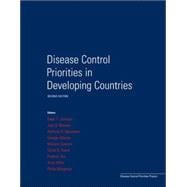
| Investing in health | p. 3 |
| Intervention cost-effectiveness : overview of main messages | p. 35 |
| Strengthening health systems | p. 87 |
| Priorities for global research and development of interventions | p. 103 |
| Science and technology for disease control : past, present, and future | p. 119 |
| Product development priorities | p. 139 |
| Economic approaches to valuing global health research | p. 157 |
| Improving the health of populations : lessons of experience | p. 165 |
| Millennium development goals for health : what will it take to accelerate progress? | p. 181 |
| Gender differentials in health | p. 195 |
| Fiscal policies for health promotion and disease prevention | p. 211 |
| Financing health systems in the 21st century | p. 225 |
| Recent trends and innovations in development assistance for health | p. 243 |
| Ethical issues in resource allocation, research, and new product development | p. 259 |
| Cost-effectiveness analysis for priority setting | p. 271 |
| Tuberculosis | p. 289 |
| Sexually transmitted infections | p. 311 |
| HIV/AIDS prevention and treatment | p. 331 |
| Diarrheal diseases | p. 371 |
| Vaccine-preventable diseases | p. 389 |
| Conquering malaria | p. 413 |
| Tropical diseases targeted for elimination : Chagas disease, lymphatic filariasis, onchocerciasis, and leprosy | p. 433 |
| Tropical diseases lacking adequate control measures : dengue, leishmaniasis, and African trypanosomiasis | p. 451 |
| Helminth infections : soil-transmitted helminth infections and schistosomiasis | p. 467 |
| Acute respiratory infections in children | p. 483 |
| Maternal and perinatal conditions | p. 499 |
| Newborn survival | p. 531 |
| Stunting, wasting, and micronutrient deficiency disorders | p. 551 |
| Health service interventions for cancer control in developing countries | p. 569 |
| Diabetes : the pandemic and potential solutions | p. 591 |
| Mental disorders | p. 605 |
| Neurological disorders | p. 627 |
| Cardiovascular disease | p. 645 |
| Inherited disorders of hemoglobin | p. 663 |
| Respiratory diseases of adults | p. 681 |
| Diseases of the kidney and the urinary system | p. 695 |
| Skin diseases | p. 707 |
| Oral and craniofacial diseases and disorders | p. 723 |
| Unintentional injuries | p. 737 |
| Interpersonal violence | p. 755 |
| Water supply, sanitation, and hygiene promotion | p. 771 |
| Indoor air pollution | p. 793 |
| Air and water pollution : burden and strategies for control | p. 817 |
| Prevention of chronic disease by means of diet and lifestyle changes | p. 833 |
| The growing burden of risk from high blood pressure, cholesterol, and bodyweight | p. 851 |
| Tobacco addiction | p. 869 |
| Alcohol | p. 887 |
| Illicit opiate abuse | p. 907 |
| Learning and developmental disabilities | p. 933 |
| Loss of vision and hearing | p. 953 |
| Cost-effectiveness of interventions for musculoskeletal conditions | p. 963 |
| Pain control for people with cancer and AIDS | p. 981 |
| Public health surveillance : a tool for targeting and monitoring interventions | p. 997 |
| Information to improve decision making for health | p. 1017 |
| Drug resistance | p. 1031 |
| Community health and nutrition programs | p. 1053 |
| Contraception | p. 1075 |
| School-based health and nutrition programs | p. 1091 |
| Adolescent health programs | p. 1109 |
| Occupational health | p. 1127 |
| Natural disaster mitigation and relief | p. 1147 |
| Control and eradication | p. 1163 |
| Integrated management of the sick child | p. 1177 |
| General primary care | p. 1193 |
| The district hospital | p. 1211 |
| Referral hospitals | p. 1229 |
| Surgery | p. 1245 |
| Emergency medical services | p. 1261 |
| Complementary and alternative medicine | p. 1281 |
| Improving the quality of care in developing countries | p. 1293 |
| Health workers : building and motivating the workforce | p. 1309 |
| Ensuring supplies of appropriate drugs and vaccines | p. 1323 |
| Strategic management of clinical services | p. 1339 |
| Table of Contents provided by Blackwell. All Rights Reserved. |
The New copy of this book will include any supplemental materials advertised. Please check the title of the book to determine if it should include any access cards, study guides, lab manuals, CDs, etc.
The Used, Rental and eBook copies of this book are not guaranteed to include any supplemental materials. Typically, only the book itself is included. This is true even if the title states it includes any access cards, study guides, lab manuals, CDs, etc.